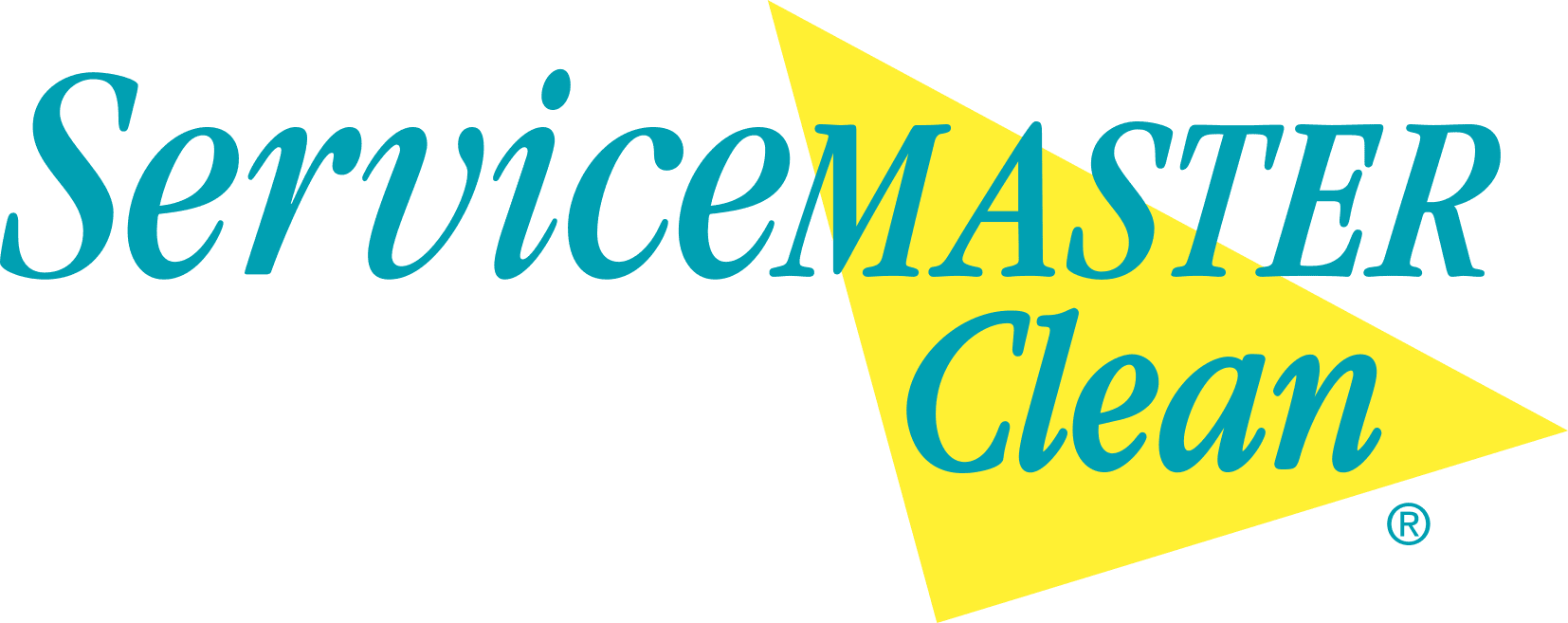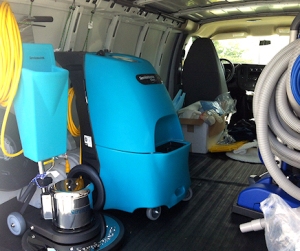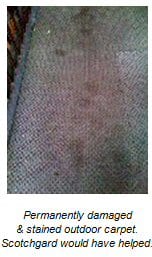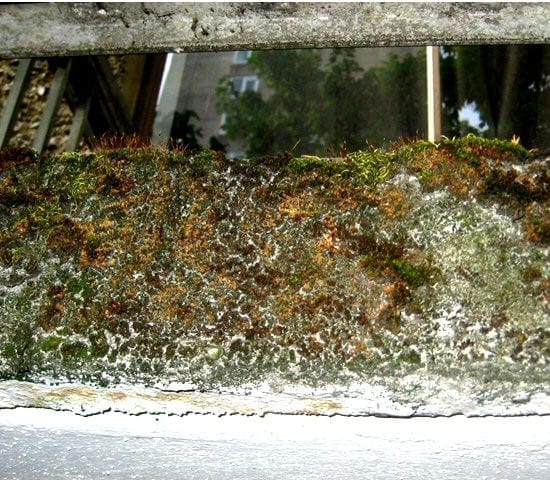The 4 Elements of Cleaning – Anything
Known as: The Four Fundamentals of Soil Suspension
There are 4 elements involved in cleaning, whether you’re cleaning your clothes, the dishes, the car or carpets. These elements are necessary to lift the soil from the surface which you are trying to clean – suspending it – allowing it to be rinsed away or removed.
Understanding how this applies to carpet cleaning is an important piece of knowledge. It is a part of each technician’s certification. The description of these elements in the following excerpt is taken from the IICRC certified Carpet Cleaners Handbook, from ESTEAM.
4 Fundamentals of Soil Suspension:
They are: temperature, agitation, cleaning agents, and time.
If one of the fundamentals is decreased then one of the others must increase.
Temperature.
A recognized law of physics, Arrhenius’ Law, states: For every 18 degrees over 118 degrees (Fahrenheit) that the temperature of a cleaning solution is increased, the effectiveness of that solution will increase by a factor of 2.
Hot water is an extremely valuable tool in carpet cleaning and should not be viewed as harmful to the fiber or the carpet.
Agitation or Mechanical Action
May be accomplished with brush and elbow action, psi from the spray wand, or with the scrubbing action of a rotary or cylindrical machine. The functions of agitation include the following:
1) Aid in distribution of preconditioning agents
2) Assist in soil suspension
3) Lift matted and crushed face fibers.
Cleaning Agents
Cleaning agents or solutions are present in the pre-spray solutions and spot removers used during carpet cleaning. They are chosen based on what type of soil is present in the carpet, and what the carpet is made of.
Time
Time is required for the cleaning agents to perform their function of releasing the soils from the fibers. This contact time is referred to as dwell time, and is generally felt that 5 – 10 minutes dwell time is ideal.
If one of the fundamentals is decreased, one of the others must increase. This is important to keep in mind when considering our next article, and the differences in cleaning methods.
Where To Use Scotchgard In Your Strata
 Q – “Should I use Scotchgard in all of the hallways? What do you recommend?”
Q – “Should I use Scotchgard in all of the hallways? What do you recommend?”
A – Put Scotchgard to the best use possible while saving money – use it in high traffic areas, places where the most staining is likely to occur, but you usually don’t need to put it on all of your common area carpet.
High Traffic Areas:
Outside of Elevator Doors – This is an area where people often spill coffee, put down their bag of garbage they are carrying out of the building, or unknowingly deposit soil from the soles of their shoes or bicycle wheels as they come into the building. Using Scotchgard to protect a 10’x10’ area outside of elevator doors makes a huge improvement in carpet’s appearance over the course of a year because the technicians cleaning the carpets can easily remove what’s been deposited.
Frequently Used Stairwells – Not all the stairs in your buildings get used frequently, but those on the lower floors often do. Most stairwells from the ground floor up to the first floor, or down from the main floor to underground parkades get heavily used, and heavily soiled. Dirt is deposited on the carpets there picked up from outside or even inside in the parkade. Break dust, oil, and gunk gets on those stairs and is very difficult to get out. Scotchgard in those stairwells makes a huge improvement.
Frequent Problem Areas – Most buildings have a few areas which are particular to them, where the building manager or tenants find repeat soiling or staining. This can be outside the entrance to common rooms like the gym, a shared patio or even rooftop pool area. Anywhere people go outside to watch the sunset, the fireworks, or socialize during the summer, often leads to soiling of the carpets when they step back inside. Any area where you’re finding dirt appears faster in the carpet than other areas, that’s another place to put Scotchgard. It’ll help ensure that instead of getting ground in and set, it gets cleaned up and out.
Outdoor Carpet – If you have a building with outdoor walkways, covered areas protected from rain but carpeted – these areas are subject to a lot of wear and tear, and heavy soiling. Scotchgard is recommended to help protect all such areas.
Pet Buildings – If you manage a pet heavy building, this may be a building where Scotchgard should be used more than most. If pets are unable to wait until they’re outdoors to do their ‘business’, the results can be smelly, unhygienic, and a really bad carpet problem. Scotchgard can help make the clean up easier, but we have other kits as well to help with clean up. Here, it may also help protect the carpet fibers from tenants using products that can have bleaching properties to clean up after their pet messes
Algae and Moss Cleaning
Algae. Moss. It feeds. It grows. It takes over the shady sides of your buildings and becomes more than just an ‘uglifier’. It can eat into the surface of the building and do permanent damage. It erodes paint, wood, and even concrete, the roots biting into surface and deteriorating that surface as it grows and spreads.
So what can you do about it? Start by cleaning it off.
- Pressure washing on vinyl siding is possible, if you have a skilled worker doing the task. Washing must be performed in a downward motion, so as not to force water up and under the siding. Care must be taken not to force water into the building envelope.
- Hand scrubbing with a stiff bristle brush, soap, and algaecides also works, if you can’t pressure wash.
- To help prevent it coming back year after year, using an algaecide with your cleaning will diminish the problem over repeated cleanings, lessening the return of growth over time. There are types available which won’t damage plants around the area in which you’re working.
- Trim back the landscaping; if you have algae growing on the shaded sides of your building, have the landscapers trim in ways that let more light into the shaded areas. This will help reduce algae growth.
- Clean the buildings in mid-summer. The long, hot, dry days help in the cleaning process, by evaporating the water used in the cleaning process. Also, this ensures you’ve waited until after the algae growth season (rainy, short winter and spring days), but you’ve cleaned and killed it before those conditions come back.
- Paint an algaecide preventative coating onto troublesome surfaces.
Green Cleaning
What is green cleaning?
Green cleaning is comprised of facility cleaning products and methods developed to improve occupant health and performance while minimizing impact on the environment. Not all green cleaning products are independently audited and certified green; but ours are.
ServiceMaster Clean® detergent-free cleaning uses only ingredients listed by the FDA as safe for consumption and products that are free of surfactants or wetting agents. Ideal for individuals with asthma, chemical and allergic sensitivities, our green cleaning products contain no VOCs (volatile organic compounds) or ingredients that are considered corrosive, alkaline or acidic. ServiceMaster Clean green cleaning is a highly efficient and effective cleaning system that is built around these advanced, innovative products.
Green cleaning made easy.
Switching to green cleaning is as easy as making a phone call, and the actual changes in cleaning methods and products will be integrated seamlessly into your existing maintenance plan. Cleaning results are equal to traditional cleaning, but ServiceMaster Clean® green cleaning products are healthier for employees and feature a higher rate of biodegradation for reduced impact on our environment.
Healthy businesses are strong businesses.
In a competitive landscape, more businesses are realizing that their workplace can be a strategic business tool and its care is vital to protecting its most valuable asset—its workers.
Recent studies have shown that sustainable buildings, or buildings that go green, have measurable financial gains due to employee health, productivity, and retention as well as lower operating costs and certain government incentives.* And, as more and more businesses benefit from green cleaning, their individual impact grows exponentially to reach a global scale.
Research has shown that facilities that switch to green cleaning have:
- Healthier employees
- Lower operating costs and greater access to governmental financial incentives
- Positive environmental impacts
Green cleaning is one of the easiest and fastest ways for building managers to make their facilities healthier and safer for employees, not to mention their contribution to the overall environment. Plus, it offers the ability to easily earn quick LEED® points in the process.
Healthier employees—your business at its best.
With 30% of U.S. workers suffering from health problems caused by Sick Building Syndrome, companies are vastly underutilizing their human assets and underestimating the benefits of switching to green cleaning. With the same effectiveness as traditional cleaning, and little or no cost increase, the return on investment for switching to green cleaning is immense.**
In the 1960s, Sick Building Syndrome (SBS) was first identified when research revealed that volatile organic compounds from carpeting and furniture, inadequate air circulation, poor lighting, mold buildup and disruptive temperature variances were contributing to nausea, respiratory problems, skin rashes, lethargy, headaches and numerous other health concerns. Since then, many independent studies have shown that switching to green cleaning leads to reduced employee sick days and absences.***
A 2002 study by the Indoor Environment Department at the Lawrence Berkley National Design Laboratory in California found that the improved air quality by use of green design, building materials and technologies can lower sick building symptoms by 20% to 50%, while cold and influenza are reduced by 9% to 20%, and allergies and asthma drop by 8% to 25%.
Get the most out of your business by keeping your employees at their healthiest.
Incentives and programs: lower operating costs and financial incentives.
Switching to green cleaning is an easy way to get your building and business on the path to saving money, being healthier and getting green-certified. There are several programs in place to reward your business and/or make certain it is as green as possible.
The big picture: positive environmental impact.
In addition to the immediate and direct human benefits of switching to green cleaning, the long-term relief for our environment is vast.
In the United States, commercial buildings consume 17% of the water, 33% of the energy, 40% of the raw materials and 71% of the electricity. They produce, directly or indirectly, 40% of the landfill waste, 33% of the carbon dioxide, 49% of the sulfur dioxide and 10% of the particulate emissions.
When each of us takes on the responsibility of switching to green cleaning and other green building practices, together we can make an enormous improvement to our overall environment.
| * | Source: White Paper on Sustainability, November 2003, Building Design & Construction. |
| ** | Source: “Creating the Sustainable Workplace,” AIA: The Cornerstone. |
| *** | Source: “Indoor Air Facts No. 4: Sick Building Syndrome (SBS)” , “An Introduction to Indoor Air Quality,” U.S. Environmental Protection Agency, 2006. |
Awnings – Architecture Changes Bring Challenges
Inward slanting awnings – this is a newer feature being found in Vancouver over the last couple of years. I’ve heard (though I may be wrong) that this is due to a change in Vancouver building law which no longer allows rain to run off of a building awning and onto city sidewalk. Instead, the rainwater is directed downward to a gutter running the length of the awning where it meets the building. It then flows through a downspout into the city sewer system.
We had a question from a couple of property managers concerning this type of glass canopy that appeared to be leaking. If there are drips coming from the bottom sides of such a structure. If the gutter at the base of these awnings is not regularly cleaned, they may become clogged with leaves, debris, and garbage thrown from above or blown off balconies by the wind. Cleaning these gutters should get rid of any leaks you may be having.
Reoccuring Spots – Wicking Explained
I’ve visited strata buildings and homes and spoken with frustrated managers or owners regarding unusually stubborn spots and stains. The spots seem better or to even have disappeared when the carpet is freshly cleaned, then reappear a day or so later. Here is some information regarding why that can happen, and what to do about it when it does.
The first step: don’t panic.
The second step: call ServiceMaster Residential (604-435-1135). We’ll take care of it – if it can be taken care of.
Here’s what we’re dealing with.
Spots may reappear on carpet for several reasons. The most immediate reason involves a process called wicking. Soil wicking can be caused by a heavy accumulation of residue at the base of the carpet yarns. As the carpet dries, the soil hidden at the base of the fibers is drawn back upward toward the surface. In this case the best way to combat the stain is:
- Extra vacuuming in the area before hand to remove as much of that soil as possible
- After steam cleaning, make extra drying passes over the stain with carpet cleaning wand, or through use of a post bonnet clean
- Use a weighted towel or other absorbent material to collect the residue as it wicks to the surface.
This can also be an issue if whatever soil was embedded in the carpet, soaked through the fibers and into the backing or underlay. The surface may appear clean after the servicing, but that residual soil which can’t be attacked from above may wick its way back up afterward as the carpet dries. Repeat attacking of the stain is necessary in this case.
Other approaches may be necessary as well. Our technicians may need to identify what type of soil has become embedded in the carpet. Then the appropriate spotting agents can be utilized. It is advised not to use bleaches or strong chemicals on site if the soil hasn’t been identified – this can bleach the carpet fibers, or, if the wrong PH level product is used, further adhere the soil to the fibers, making it a permanent stain.
The other unfortunate issue may be uncorrectable: it isn’t really a stain. In the past few months I’ve seen the following uncorrectable issues, some of which could have been avoided:
- Tenant cut the carpet fibers to remove a wax spill. The resulting divot in the carpet disrupts the reflection of light, making a small shadowy patch that appears to be a stain
- Burned carpet fibers. Did someone drop a cigarette inside?
- Lighter spots. Bleaching of carpet fibers. A tenant used a ‘mystery cleaning agent’ in an attempt to remove the stain. When the carpet was cleaned, the water reacted to the residue of the ‘mystery cleaning agent’, activating bleaching agents. As the carpet dried, light scrubbing spots appeared.
So, in conclusion, if a stain on your carpet seems to disappear when your carpet is professionally cleaned, then reappears, call our office. We can always identify the problem. We are often able to combat the stain and correct the situation.
Who Is ServiceMaster?
“You guys are just a small outfit, right?”
Annual Revenues exceed $5.5 billion. (But that’s not just the Burnaby office)
“If you don’t live it, you don’t believe it.”
Marion E. Wade.
Founder of ServiceMaster
ServiceMaster Quick Facts:
- 1947, the original company is incorporated by Marion Wade, a former minor league baseball player
- 1952, services expanded to include carpet cleaning
- 1984, Fortune Magazine rates ServiceMaster #1 among the “Service 500”
- 1998, Success Magazine names ServiceMaster the “#1 Best-Run Franchise Company in the Country”.
- 1998, Financial Times ranks ServiceMaster the “Sixth Most Respected Company in The World”.
- Present: ServiceMaster ranked #3, in “Top 5 In Its’ Industry” by Fortune 500
But what does that mean to YOU, in regards to dealing with
ServiceMaster Clean Residential?
- You’re working with a locally owned company that draws upon the resources, research, and experience of a $5.5 billion dollar organization.
- ServiceMaster holds us accountable for quality standards.
- We’re also provided with cleansers and equipment that is researched, designed and available only to ServiceMaster operators, including the Green product line.
But Who Are You Guys At
ServiceMaster Clean Residential?
David Benoit is the owner and operator of the residential franchise servicing the GVRD. His background is in business, and operating a successful company is his passion. He purchased the Residential franchise – servicing stratas and property management companies and homeowners for building maintenance needs in 1998. He cares about people, quality, and commitment to growth through excellence, which has grown this branch of ServiceMaster since he stepped in.
“If there’s a problem, we’ll always go back and see if we can fix it. We’ll take care of it.”
David Benoit.
ServiceMaster Clean Residential in 2010 has grown again to service its customers even better:
- Customer follow up and satisfaction program.
- Addition of another carpet cleaning technician to keep up with demand
- New Service: dryer vent cleaning with our exterior services division
- High Rise Services: window cleaning, dryer vent cleaning, and caulking repair
- Additional exterior crews added
- New Office Location at #160 – 21900 Westminster Hwy, acting as central dispatch for the GVRD
Each division provides services from specialists. For example, our carpet cleaners are trained, career technicians. They don’t clean windows. However, we do have window cleaning experts and other professional cleaners in their respective fields.
Everyone at SVM Clean Residential works to fulfill our simple mandate: “We’ll take care of it.”












